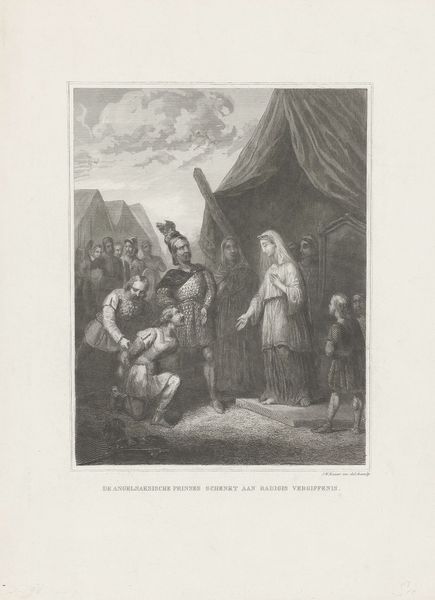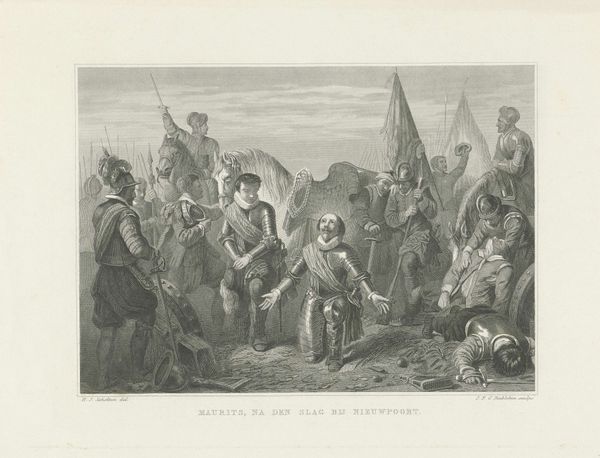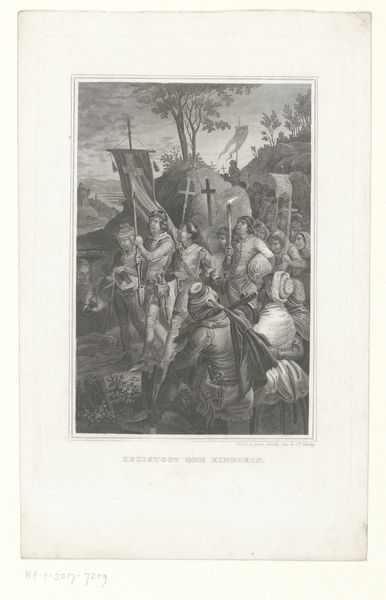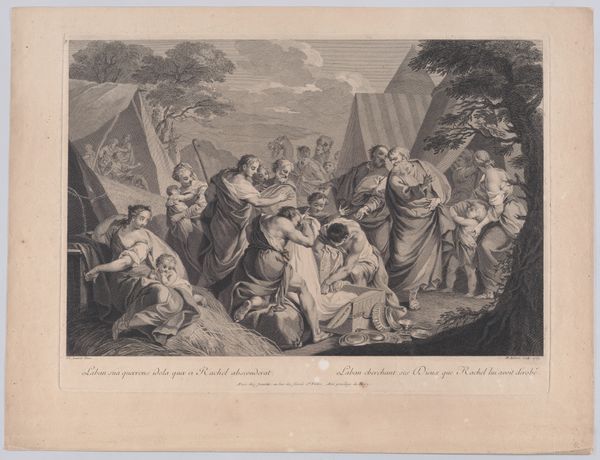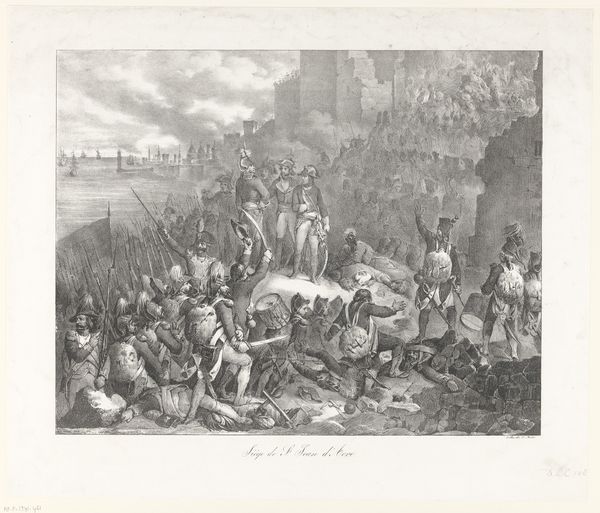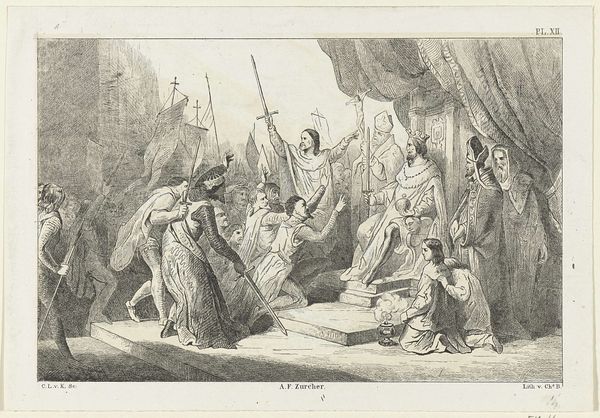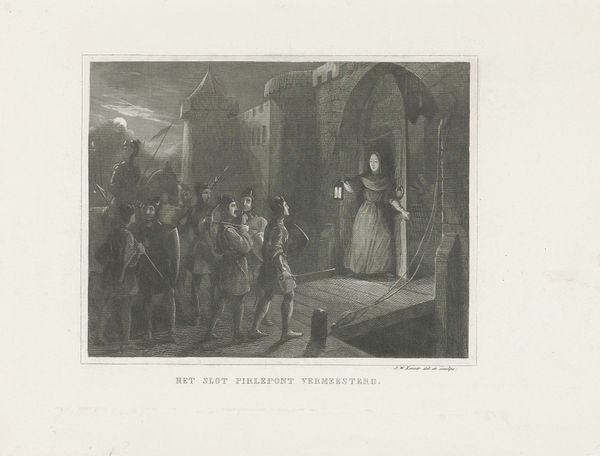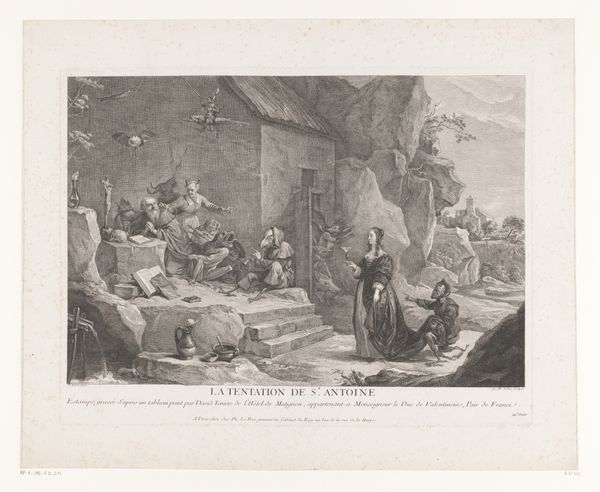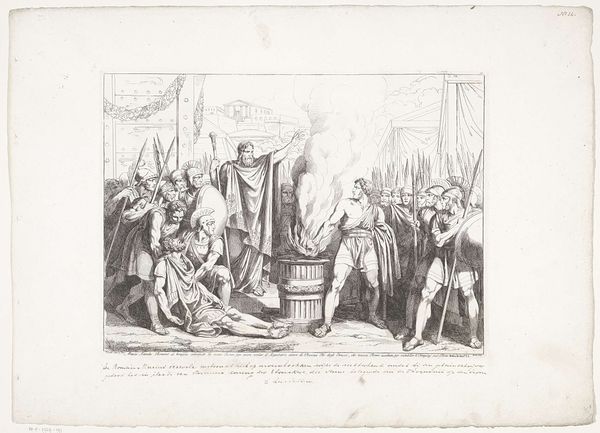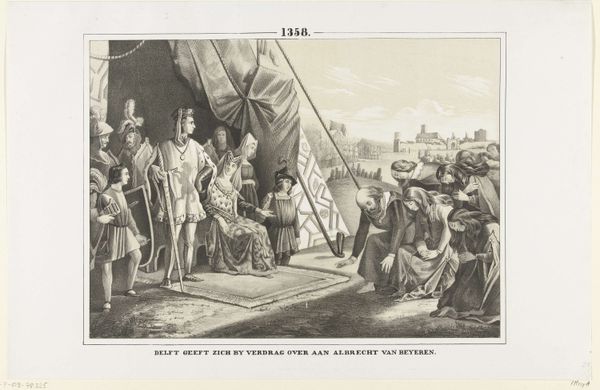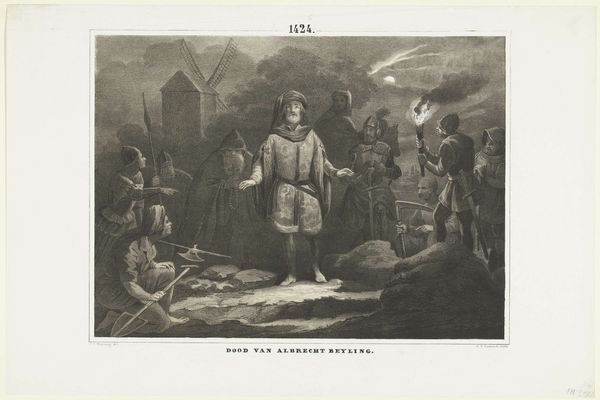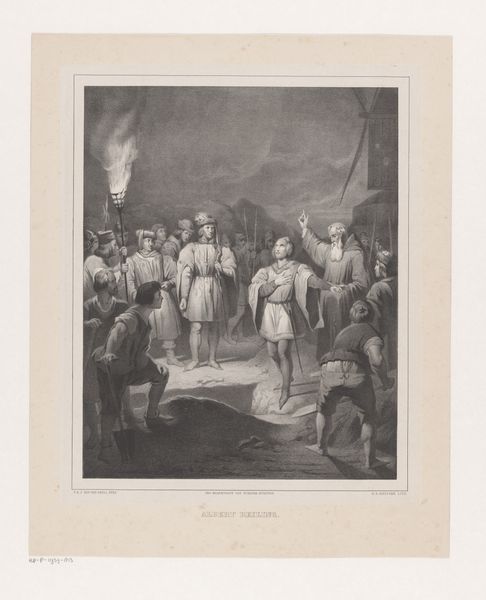
Julianus bezorgt de gegijzelde zoon terug bij de leider der Chamaven, ca. 350-363 1838 - 1840
0:00
0:00
print, engraving
#
narrative-art
# print
#
landscape
#
figuration
#
romanticism
#
history-painting
#
engraving
Dimensions: height 192 mm, width 247 mm
Copyright: Rijks Museum: Open Domain
Johann Wilhelm Kaiser made this print depicting ‘Julianus returns the hostage son to the leader of the Chamavi’ sometime in the mid-19th century. It shows the Roman Emperor Julian returning a young hostage to his father, a leader of the Germanic Chamavi tribe. Kaiser probably intended the image to promote the virtues of benevolence and responsible leadership. It’s important to remember that, in 19th-century Europe, historical subjects were often chosen to reflect contemporary political ideals. This was especially true in the Netherlands, where ideas about national identity were being forged. Kaiser and other artists turned to the distant past in search of models for the present. In this case, the story of Julianus may have been seen as a way to promote a vision of ethical leadership. Historical prints like this offer insight into the values and beliefs of the past. By studying these images and their context, using sources like newspapers and political pamphlets, we can learn a great deal about the society that produced them.
Comments
No comments
Be the first to comment and join the conversation on the ultimate creative platform.
